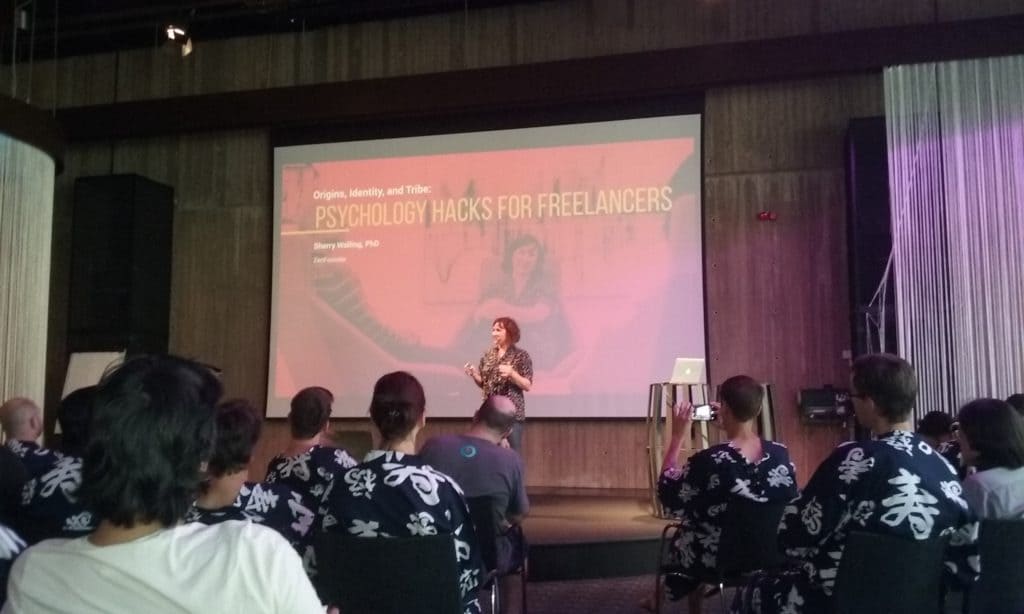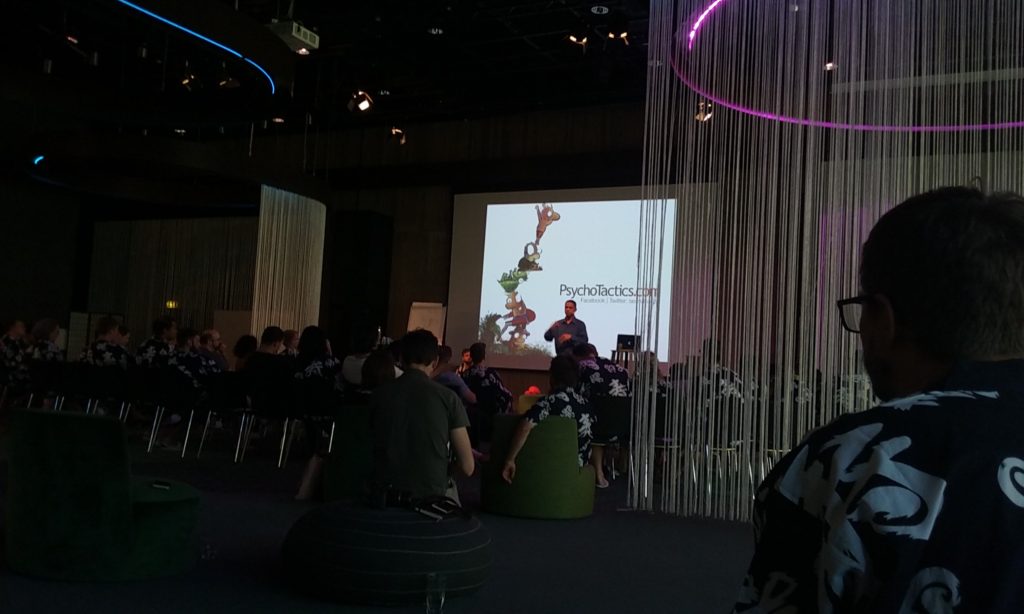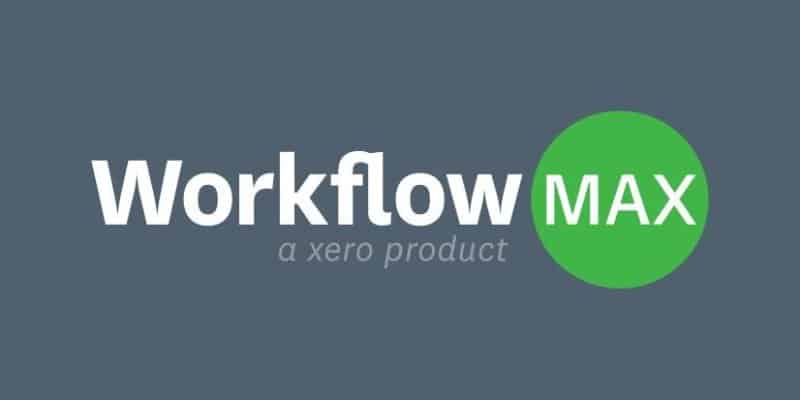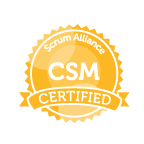About two weeks ago, sitting at the kitchen table in my home in the Australian bush (about two hours east of Melbourne), I finally decided to make the long trek north to DYFConf this year. And I’m so glad I did..
The decision to go to this year’s event didn’t happen quickly. After all, it is a long, long, long way to Sweden from where I live. For many months I had been putting off going. There’s too much work to do, can I really afford to take a week off? There’s always next year.. etc. etc.
Luckily I decided to click the conference’s booking button on that cold winter’s evening in the bush. I had a feeling this could be a business-changing (if not life-changing) event. As it turned out, the conference was well worth ever penny and every minute of those 40+ hours sitting in a cramped airplane seat.
DYFConf is a conference for freelancers and startup founders organised by Brennan Dunn the founder of Double Your Freelancing – a fantastic resource for freelancers and small business owners. I have been reading Brennan’s content and learning from his paid and unpaid courses since the early days of my entrepreneurial journey.
Brennan’s long form content on diverse topics such as pricing your services, billing clients, billing by the hour, productizing services, marketing and many other topics have helped me make major shifts in the way I run my business over the last few years. Attending DYFConf would allow me to finally meet Brennan and other members of the Double Your Freelancing community.
There are two separate DYFConf conferences. DYFConf Europe is a niche freelancer and tech entrepreneur conference held annually in Stockholm, Sweden. There is also a DYFConf US event – the last one being held in Norfolk, Virginia in the US. DYFConf’s main focus is on the sharing of actionable tactics for growing the businesses of freelancers and smaller businesses.
Topics covered this year at DYFConf Europe included pricing (and moving to value based pricing), marketing automation, customer onboarding, the psychological journey of the entrepreneur (including a talk on tactics for overcoming imposter syndrome), productizing your consulting business, how to move from services to a purely products based business and strategies for selling consulting services.
This year’s speaker line up included Sean D’Souza, author of The Brain Audit, Rob Walling, the creator of the Drip Marketing Automation platform – now sold to LeadPages, and a seasoned podcaster. If you’re thinking of moving to products I thoroughly recommend listening to his Startups For the Rest of Us podcast http://www.startupsfortherestofus.com/). Also included were the psychologist Sherry Walling, Jane Portman of UI Breakfast, Shai Schechter, Mojca Mars, Karin Taliga and Brennan Dunn. Brennan Dunn is the organiser of DYFConf and the founder of the excellent http://doubleyourfreelancing.com
The conference schedule is available here.
Arriving at the resort – Friday 16th June
The conference was held at the Japanese Yasuragi Hasseludden Hotel about 30 minutes from Stockholm by boat or car. Brennan Dunn from doubleyourfreelancing had set up a Slack account for the attendees, so I was able to connect with some in the group before we left Stockholm. As a result I found myself on board the ferry from Stockholm’s Stromkajen harbour at 3pm breaking the ice with about 10 of my fellow attendees. On board the boat I met freelancers and entrepreneurs from UK, France, Ireland, Holland, Israel and Sweden. At the event itself I would also meet and network with other freelancers and entrepreneurs from the US, Canada, Norway, Finland, Denmark, Russia and Estonia. This was a very international conference.
The Yasuragi hotel is nestled in the forest with a view of the main shipping channel to Stockholm. Something we became all too aware of at 5.20am on our first morning as a deep fog descended on the area. Nearly all of us – except Sean D’Souza who managed to sleep through the cacophony – were woken up by the blasts of fog horns as ships tried to avoid each other in the dense fog. Luckily after 20 minutes or so the ships disappeared and a few hours of sleep were snatched before Day 1 began.
Day 1 – Saturday 17th June
The first full day of the conference began at 8am with a delicious Swedish Smorgasbord breakfast on the hotel’s terrace. Apart from a few hours of rain a few day’s earlier on my second day in Sweden we were blessed with blue skies and sunshine every day. Eating breakfast and socializing on the sunny terrace was a daily highlight of the conference.
Talk 1 : Dr Sherry Walling “Origins, Identity, and Befriending your Future Self: Psychology Hacks for Freelancers”
Talk 2 : Shai Schechter on “Why Clients Buy”
Talk 3 : Jane Portman on “How to Craft an Irresistible Productized Consulting Offer”
Talk 4 : Mojca Zove (Mars) on “Growing Authority: How to Open New Doors with Social Media”
Talk 5 : Sean D’Souza on “How To Increase Prices (Without Losing Clients)”
Talk 1 : Dr Sherry Walling “Origins, Identity, and Befriending your Future Self: Psychology Hacks for Freelancers”
The first talk of the day. This talk focused on the psychological benefits and drawbacks of working for yourself as an entrepreneur – and specifically freelancers who often work on their own. Key insights were the four archetypes that describe typical founders (The Golden Child, The Loner, The Pleaser and The Survivor) and the fact that, as entrepreneurs our love of our business is very similar to a parent’s love for their child (and since Love is Blind we often don’t make the best decisions for our businesses due to this attachment). My detailed notes on Sherry’ s talk are available for download here.
Talk 2 : Shai Schechter on “Why Clients Buy”
“Whether you’re selling B2B or B2C. We’re all selling H2H: Human to Human” [ref]
The premise of Shai’s talk is that human beings are the one’s making buying decisions in a business and therefore we have to talk directly to them and their needs. Customers essentially buy based on the value (or more accurately the perceived value) of the solution offered to them.
Or more correctly:
Shai reminded us that marketing is all about ‘helping clients to realise that hiring us will benefit them more than the cost of our services to them’. The bulk of Shai’s talk covered the following ways that we can communicate this fact to our clients:
1) How to create ‘Client Friendly Emails’
This section of the talk started with the famous organ donation study. In this study it was found that organ donation rates were vastly greater in countries where donors were asked to opt-out rather than opt-in (i.e. on the organ donation form an opt-out would require a person to check a box if they don’t want to participate). Just the design of the form and the defaults chosen made a huge and significant difference in donor rates. So how can we use this knowledge in our communications with clients? Well, we need to ensure that the language we use sets up defaults that will lead to clients taking action on our offer. For example, rather than say ‘Let me know if this is of interest to you’ at the end of an email we could instead say ‘If this works for you, reply with yes’ (for example when asking a client for a testimonial we could say in our email: “just reply with ‘yes’ and I’ll send over six short questions for your to answer”). Alternatively you could just give your customer 3 options and ask them to reply with a number.
Shai’s recommendation is also to craft shorter and more concise emails so that clients don’t have to spent time trying to dig your main points out of a long email. And when it comes to scheduling appointments with clients use a tool like Calendly rather than communicating backwards and forwards with clients via email.
2) Adding a Call to Action to every page.
There should be a clear call to action on every page of your website. Clients need to be aware of the next step to take, otherwise they’ll not convert.
3) Getting specific about who we help
Clients are usually asking “is this for me?” when they visit your website or are exposed to your other marketing collateral. You need to ensure that your website is clearly targeted to the clients you are looking to serve. One way to answer the “is this for me?” question is by including testimonials for similar clients.
4) Getting specific about where your services will get your clients.
On your website you need to be explicit about the outcomes that your clients will achieve if they buy your product / service. The client is asking the question “will this (product / service) get me to where I want to be?”. It is worth interviewing your existing clients and asking them why they chose to work with you. Use that feedback in your messaging on your website.
Some good questions were asked by the audience after the talk. These included:
Q : Is it a good idea to add images and videos to an email or should you go with text only emails?
A: It is recommended to start out with text only when crafting an email. It is easier to work out what you’d like to say. Of course you can use images, video or media if that serves to support the message.
Q: Can you provide some examples of where people have gone wrong with their communication?
A: One common mistake is to talk about what you actually do (e.g. your services), without actually discussing the outcomes you’ll be providing to your customers. You should focus on the pain first – i.e. what problems are your clients actually experiencing? Then draw a picture of what life would look like if their problem was fixed. Then go on to outline the fix.
Q: If you’re too specific, clients who cannot identify with the pain you describe will walk away. Is this a problem?
A: Sean D’Souza answered this question for Shai. “The purpose is to alienate most of your (potential) customers” said Sean. The idea is to be highly targeted and just aim for the bullseye. Don’t chuck darts all over the board. The audience in the bullseye is bigger than you think.
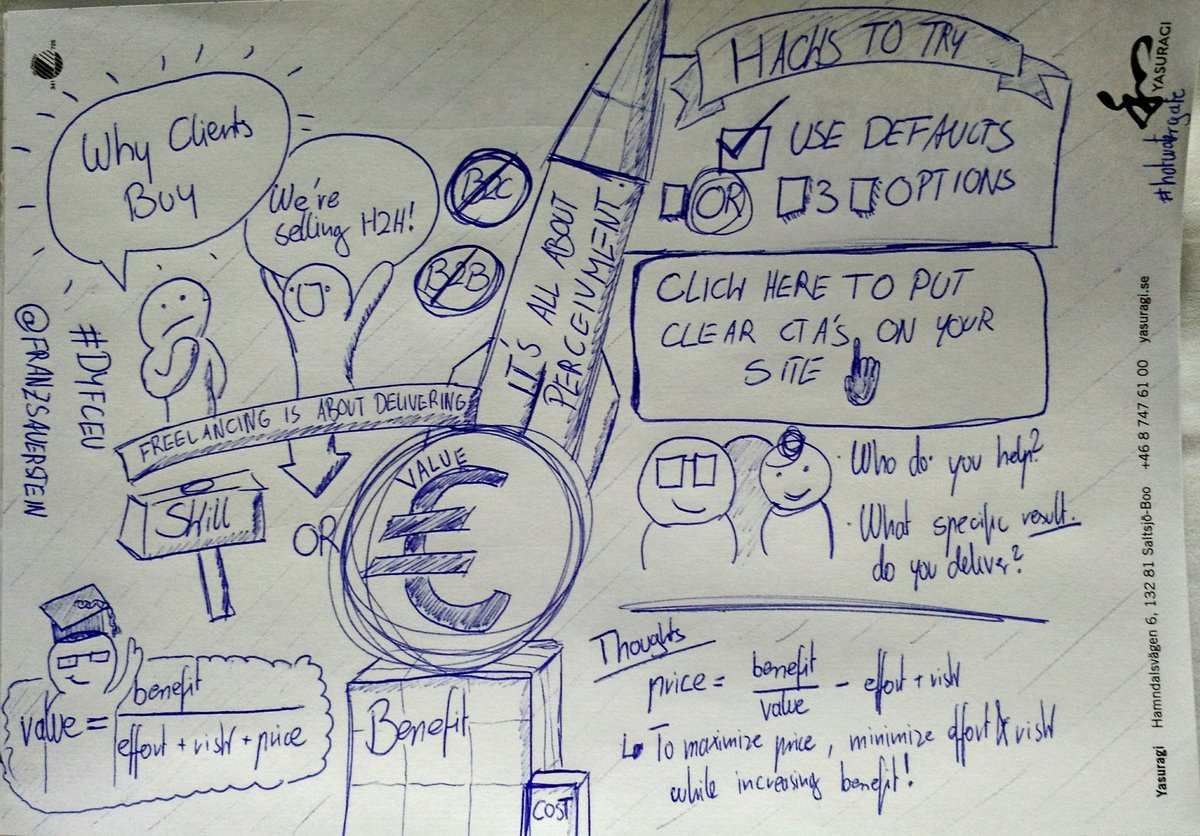
A visual summary of Shai Schechter’s talk. Illustration by Franz Sauerstein (with permission)
Talk 3 : Jane Portman on “How to Craft an Irresistible Productized Consulting Offer”
Jane Portman is the author of the book ‘The UI Audit‘ and a prolific blogger and podcaster. Her podcast is the UI Breakfast podcast where she discusses UI/UX, marketing and web design and more.
Jane’s talk was about why you should productize you services and how you should then go about promoting your productized service offerings to your potential clients. There are many advantages to having a set of productized service offerings. Clients (or prospective clients) are typically wary of consultants. They don’t know what they’ll charge and they are often unsure of the services offered. There is often a trust gap – how do prospective clients know that they can trust you to deliver for them? The advantages of having a clearly defined productized services offering include 1) no need for time-consuming proposal writing, 2) offers a pathway to transitioning to value based services and 3) helps to sell recurring and add-on services in the future.
The number 1 way to address your prospective client’s concerns – and thereby win more business – is to create a well planned services page on your website. On your services page you’ll be packaging up your services and offer them in a way that is irresistible to your market. You services page can be from something as simple as a plain textual page outlining your core services to a more advanced page with images and video to illustrate your offering.
Jane recommends the following basic services lineup:
- A strategy call (priced from $200 – 500)
- An entry point gig (say $500 – $20,000 depending on the scale of the project)
- An advanced offering (under $5000) that represents a packaged offering of a service you already provide
- Recurring revenue via a retainer or monthly service.
Jane’s own basic services lineup is available here.
Jane also discussed Benedikt’s services lineup (he’s a Rails developer). His services include:
- A 60 minute consulting call (256 EUR)
- A Ruby on Rails app performance review (2560 EUR)
- Ongoing Ruby on Rails maintenance (2048 EUR / month)
- Product development (1536 EUR / day)
Benedikt’s full services lineup is here.
Once you’ve defined your services page, the next step is to define your target audience. One way to go about this is to work out your top 3 favourite clients. Then niche down on a certain business type. Ideally we’ll end up with a niche and favourite client type that align. Once you’ve defined your ideal audience – in a niche that works for your business – then you need to define the scope of your offering. To do this you can think about your top 3 favourite projects. Also ask yourself what has top value for your clients and niche down on format of the offering.
At this stage it also important to decide the level of involvement you’d like to have with your ideal target clients. For example you could position yourself as an advisor / consultant providing strategic consulting over the phone or in person. Alternatively you could review other’s work and report back to the client (aka ‘Review and Report’) or provide hands-on project based work.
Jane went on to provide some useful insights on pricing services. One way to price your services is to think of your delivery time and double it to cover edge cases and contingencies. Projects always take longer and cost more than you think. Create tiers and packages for your pricing – a point discussed in more detail (and with an interesting alternative spin) in the final lecture of the day from Sean D’Souza.
Recurring services were also discussed during the talk. Jane recommended setting up automated billing to make it easy and hassle free to receive recurring service and retainer revenue. Make sure that you set up flexible contracts that allows either party to terminate the relationship if it’s not working. And when doing a lot of recurring or retainer work make sure that you don’t over book yourself. Make sure that you still can take holidays!
Finally, come up with a memorable and meaningful name for your service offering.
Jane then went on to outline the process for writing the ideal sales page. The classic structure for a sales page starts with a description of the pain you’re solving, then describe the dream (i.e. what life would be like for your target client when the pain is fixed) , next describe the fix you’re proposing, then in your sales copy address typical objections that your prospective client might have and finish off with a call to action. So, in short hand the structure of the ideal sales page is:
Pain -> Dream -> Fix -> Objections -> Call to Action
Breaking down each of these steps in further detail:
Firstly, you need to describe your fix in detail. You need to describe what you do – and why you do it. One excellent way to do this is to provide clear FAQs on your website. Next, clearly describe your methodology or framework – i.e. what are the steps you carry out to deliver this solution? For example you might start with a discovery phase and then move onto further research, then delivery and execution phases.
You’ll also need to set boundaries with your clients and protect yourself by being explicit about what you will and won’t do. You need to maintain control of the client relationship. You should always be in control of scope (that’s one major advantage of having your productized service offering clearly documented).
In order to convert prospects to clients you’ll also need to overcome their objections. Two ways to facilitate this are to provide positive testimonials on your sales page and a clear money back guarantee (one way of providing what Sean D’Souza refers to as ‘Risk Reversal’).
Finally, include an obvious ‘Call to Action’ that shows the prospect exactly what to do next. Use language such as ‘Email me here and I’ll contact you’ or ‘Fill out this form and we’ll be in touch’ or ‘Book a strategy call’. To capture leads, make sure also to offer a lead magnet or freebie to your prospects. Free courses or cheat sheets work particularly well.
You now (hopefully) have the perfect sales page. What to do next?
Jane recommended putting your sales page on the front page of your website (or clearly linked from it) and letting everyone know about it. It is good to make sure that your clients know about your sales page too.
Do test runs to try out your offerings. Perhaps provide a 50% discount to get people trying your packaged services. That way you’ll be able to generate some useful testimonials for those services. This experimentation phase will also allow you to refine your sales page.
Jane pointed out some common mistakes that are made when selling productized services. These include compromising on audience, scope or price. Be very focused about who you are servicing, what you’re offering and the price for that offering. Never compromise. And if a client needs additional work, then you can set up a separate, custom engagement.
Always exceed expectations. Go the extra mile. That will lead to referrals and more engagements in the future.
Useful references from (or inspired by) Jane’s talk:
- 5 Psychological Studies on Pricing That You Absolutely MUST Read by Gregory Ciotti
- Dissecting Great Sales Copy For Productized Consulting by Patrick Mackenzie
- Nathan Barry also writes some great articles on pricing (Jane listed at least one, but I missed the link). Anyway, here are some articles of his that are worth reading: Are you making the most common pricing mistake?, How to double your launch revenue.
- I also came across this article – worth a read.
- Sign up to Jane Portman’s mailing list here
Talk 4 : Mojca Zove (Mars) on “Growing Authority: How to Open New Doors with Social Media”
Next up was Mojca Mars who gave a very useful talk on Social Media and content generation. I gained some really useful insights from this talk – especially on how to generate ideas for articles and blog posts that will resonate with my target audience.
Mojca started her talk with a discussion of her early background in business. In those early days after leaving her job she tried cold outreach to generate new business. Of the 150 companies contacted 2 became clients. It was hard work generating business this way, and it was only after an article profiling her business was published in a local newspaper that Mojca started receiving inbound enquiries for Social Media. Key take away? The power of content yet again..
Mojca became known as the ‘go-to’ person for Facebook Ads. A test of her presence in this space – when someone was looking for a Facebook Ads consultant rather than say ‘Get me a Facebook Ads Consultant’ they said ‘Get Me Mojca!’. That is what we should also aim for in our own niche. Become the ‘Go-to’ person. Become the person with Authority.
It is hard to be successful without authority. And there’s no hack or shortcut to gaining authority. It takes time.
Part of building authority is consistency. Show up every day. Write content and share valuable content with your audience consistently. Put yourself out there.
To emphasise this point, Mojca mentioned Chris Lema‘s formula: Consistent writing > trust > relationship > access > influence.
The more content you produce, the more leads you will generate. The key is consistency. And to make that happen you’ll need to have a system in place to support your content writing. It is important to create momentum in your content writing and then never, ever stop..
The knowledge you have brings authority – but how will anyone know that you have knowledge in your area if you don’t tell them? You need to be like an octopus with your tentacles everywhere, making connections and drawing people in via your content.
Mojca went on to outline a process for generating great content for your target audience. There are 4 steps:
Step 1: Create a list of 10 competitors or influencers in your industry. Research their online social media profiles and online forums they host.
Step 2: For each competitor or influencer, make a list of the questions their target audience most commonly ask.
Step 3: Compile a list of the 10 most asked questions per competitor or influencer. You should end up with 70 – 100 usable blog topics.
Step 4: Start creating blog content for each of those topics. Post snippets to Twitter and larger pieces of content to Facebook and other social media platforms. Podcasts and video can also be created for the same content. Produce and publish content consistently.
Step 5: Step it up. Boost your posts on Facebook.
There are many benefits to taking the targeted approach to content generation described above. Firstly, you get to know your target audience and their needs. You read the most commonly questions and concerns they have. You’ll also boost your visibility, you’ll get recognised more and will receive more leads and referrals – if you follow this content strategy consistently – day in day out.
Get your business in shape by creating content consistently. It won’t work overnight, but it will work..
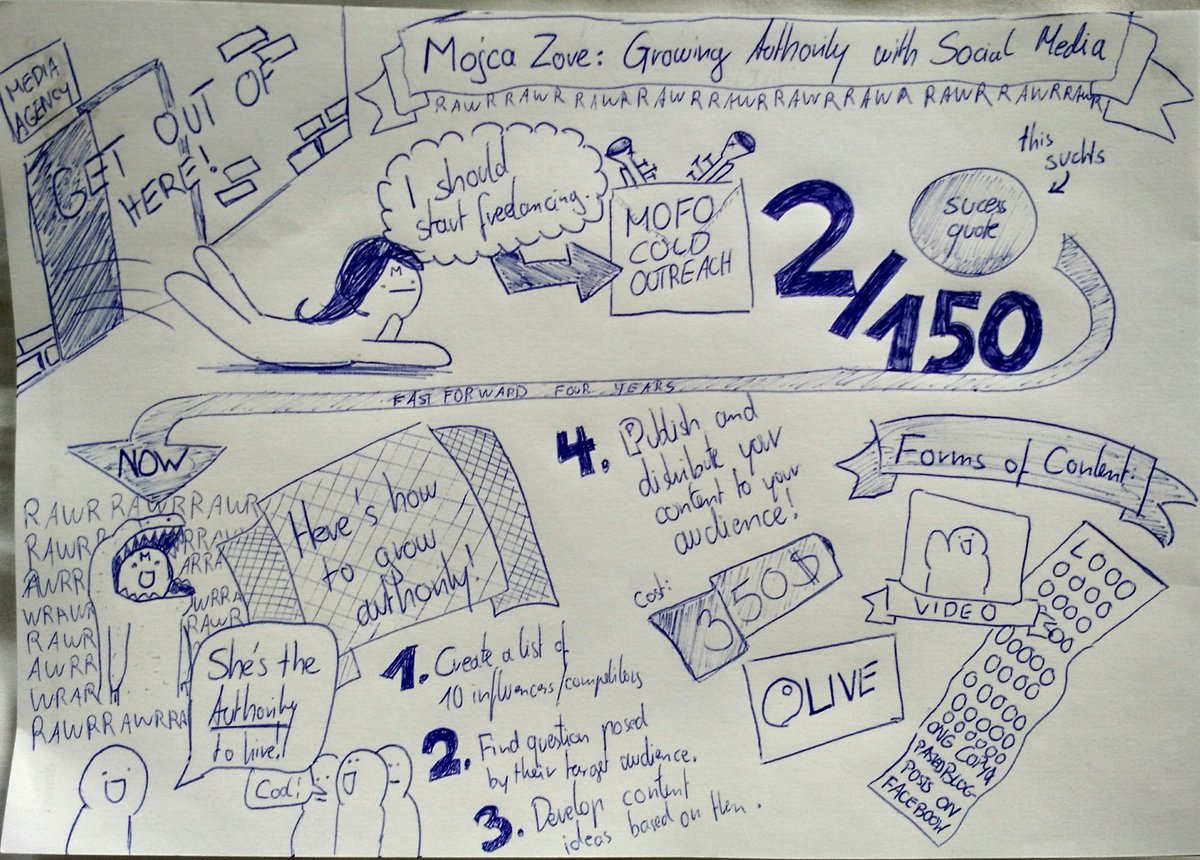
A visual summary of Mojca’s talk. Illustration by Franz Sauerstein (with permission)
Talk 5 : Sean D’Souza on “How To Increase Prices (Without Losing Clients)”
For a review of Sean’s excellent talk on pricing, I highly recommend reading Jane Portman’s blog post: “How Sean D’Souza Changed Everything I Know About Pricing“.
Day 2 – Sunday 18th June
[Coming soon]
Peter Burgess is the founder of Olivitek Software. He writes on the intersection between technology and the workplace. Upcoming blog topics will include Productivity, Motivation, Business Process Automation, Robotic Process Automation (RPA) and how-to articles with tips on how to automate your SME business. His upcoming book ‘Automating the Workplace’ will be available in the second half of 2017.
To discuss how technology can help your team do their best work contact Peter by email peter@olivitek.com or via the contact form at https://olivitek.com.



